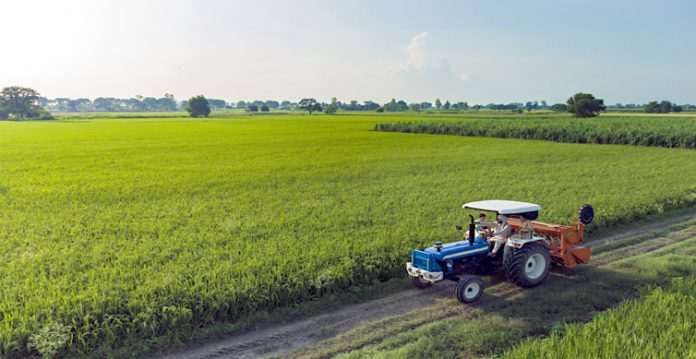The 2025 southwest monsoon has arrived with encouraging prospects, with the India Meteorological Department (IMD) forecasting above-normal rainfall at 106 per cent ± 4 per cent of the long-period average (LPA). This development is crucial for the Kharif cropping season, which runs from June to September and supports nearly 42.3 per cent of India’s population while contributing 18.2 per cent to the country’s GDP.
With a forecast of 108 per cent rainfall of LPA in June, this year’s monsoon is expected to aid timely sowing and boost yields of major Kharif crops like rice, maize, sugarcane, pulses, cotton, and oilseeds. Over 50 per cent of India’s cultivable land depends on monsoon-fed irrigation. Adequate rainfall also helps recharge groundwater levels, lowering the dependency on costly irrigation systems and enhancing crop sustainability through the Rabi season.
In contrast to last year’s delayed and excessive rainfall that led to crop damage and regional flooding, the 2025 outlook promises timely rains and better distribution across central and northwestern India. However, the IMD has cautioned about possible below-normal rainfall in peninsular and northeastern India. Such spatial irregularities remain a major concern as uneven rainfall can disrupt crop cycles, delay sowing, and impact regional productivity.
Also Read: India set for above-normal monsoon; boost to agriculture likely
This promising monsoon has wider economic implications. Agricultural output influences inflation directly. As of April 2025, the Reserve Bank of India (RBI) noted a sharp drop in consumer price index (CPI) inflation to a six-year low of 3.2 per cent, thanks to declining food inflation. A bumper Kharif harvest, paired with strong Rabi yields, is expected to further moderate prices and support the RBI’s target. This has already prompted a 50-basis-point repo rate cut to 5.5 per cent on June 6, allowing policy room for further economic support.
Agricultural prosperity boosts rural incomes and drives demand across sectors. ICRA forecasts agriculture, forestry, and fishing GVA growth between 3.5 to 4 per cent for FY2026, following a 4.6 per cent rise in FY2025. This rural momentum is projected to benefit industries like cement, tractors, edible oils, and sugar. For instance, the cement sector—35 to 37 per cent of whose demand comes from rural housing—expects 6 to 7 per cent volume growth. Similarly, tractor sales may increase by 4 to 7 per cent as farm earnings improve.
India’s rice export capacity, the highest in the world, is likely to strengthen due to surplus production. This would also allow increased exports of sugar and onions while reducing dependence on edible oil imports. The Cabinet Committee on Economic Affairs (CCEA) has bolstered this optimism with notable hikes in Minimum Support Prices (MSPs) for the 2025-26 Kharif season. Nigerseed saw the steepest MSP increase at ₹820 per quintal, followed by Ragi (₹596), Cotton (₹589), and Sesamum (₹579). MSP hikes, particularly in oilseeds and pulses (6-9 per cent rise), incentivize farmers to expand cultivation. Yet, their success hinges on consistent rainfall distribution.
Despite the optimistic outlook, risks persist. Overabundant rains could lead to waterlogging, erosion, and damage to ripening crops. The 2024 extended monsoon caused widespread crop loss, emphasizing the need for better preparedness. This year, below-normal rains in northeast and northwest India could again create regional imbalances. Climate change and unpredictable monsoon behavior add further uncertainty, despite the currently neutral El Niño-Southern Oscillation (ENSO) conditions.
To address these challenges, India must invest in climate-resilient crops, expand crop insurance schemes, modernize irrigation infrastructure, and improve weather forecasting. Enhanced credit access and disaster management systems will empower farmers to mitigate risks and improve returns.
With a supportive policy environment including RBI’s accommodative monetary stance, higher MSPs, and government-backed infrastructure investments, India is well positioned to benefit from the 2025 monsoon. However, effective rainfall distribution and disaster preparedness remain critical to translating this potential into tangible rural prosperity and macroeconomic resilience.
(This story is sourced from a third-party syndicated feed. Raavi Media takes no responsibility or liability of any nature. Raavi Media management/ythisnews.com can alter or delete the content without notice for any reason.)


